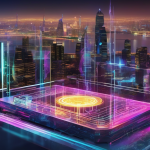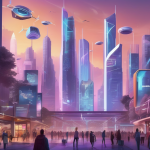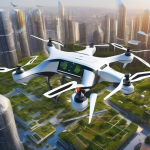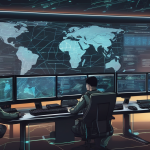Can Artificial Intelligence Save the World or Destroy It?

Artificial Intelligence (AI) is like a double-edged sword, wielding the power to either transform our world for the better or plunge us into chaos. As we stand on the brink of an AI revolution, it’s essential to examine both its potential benefits and the lurking dangers. Imagine a future where AI solves pressing global issues such as healthcare, climate change, and education. Sounds amazing, right? But hold on! What about the risks of job displacement, ethical dilemmas, and privacy concerns?
On one hand, AI can be a game-changer. In healthcare, for example, it can lead to improved diagnostics and personalized treatment plans, making healthcare more accessible to everyone. Similarly, AI’s role in combating climate change could optimize energy consumption and enhance renewable technologies, potentially saving our planet. However, these advancements come with a hefty price tag of ethical considerations and the fear of losing jobs to machines.
Moreover, the integration of AI into various industries raises questions about accountability and transparency. Are we ready to trust algorithms with our lives, our jobs, and even our security? As AI continues to evolve, we must also ponder its impact on social interactions and the future of work. Will we collaborate with machines, or will they replace us entirely? These questions are not just theoretical; they are a part of our everyday lives.
In a world where AI influences everything from healthcare to education, understanding its dual nature is crucial. It’s not just about the technology itself but how we choose to implement and regulate it. As we navigate this complex landscape, we must ensure that AI serves humanity, rather than the other way around. The future is not predetermined; it’s ours to shape. So, can AI save the world, or will it lead to our downfall? The answer lies in our hands.
The Promise of AI in Healthcare
Artificial Intelligence (AI) is not just a buzzword; it’s a game-changer in the healthcare sector. Imagine a world where doctors can diagnose diseases with pinpoint accuracy, thanks to AI algorithms that analyze vast amounts of data in seconds. This technology is revolutionizing the way we approach healthcare, leading to improved diagnostics and more personalized treatment plans. For instance, AI can sift through medical records and identify patterns that even the most experienced professionals might overlook.
One of the most exciting aspects of AI in healthcare is its ability to create tailored treatment plans for patients. By analyzing individual health data, AI systems can recommend specific therapies or medications that are most likely to be effective. This level of personalization not only enhances patient outcomes but also fosters a more engaging healthcare experience. Imagine receiving a treatment plan that feels custom-made just for you—how reassuring would that be?
Moreover, AI is streamlining patient management, making healthcare more accessible and efficient. Hospitals are adopting AI-driven systems to manage appointments, track patient progress, and even predict patient inflow, which can significantly reduce wait times. In fact, a recent study showed that AI can improve patient management efficiency by up to 30%.
However, while the promise of AI in healthcare is enormous, it’s essential to address some challenges. As we embrace this technology, we must ensure that it is implemented ethically and that patient privacy is protected. The integration of AI should enhance, not replace, the human touch that is so crucial in healthcare.
In summary, AI has the potential to transform healthcare in ways we are just beginning to understand. From improving diagnostics to personalizing treatment plans, the possibilities are endless. As we continue to explore this innovative frontier, we must remain vigilant about the ethical implications and strive to create a healthcare system that benefits everyone.
AI and Climate Change Solutions
Artificial Intelligence is emerging as a powerful ally in the fight against climate change. Imagine having a digital assistant that not only crunches numbers but also helps us make smarter decisions about our planet. AI can analyze vast amounts of data to optimize energy consumption in real-time, ensuring that we use resources more efficiently. For instance, smart grids powered by AI can predict energy demand and adjust supply accordingly, reducing waste and lowering carbon footprints.
Additionally, AI is playing a crucial role in enhancing renewable energy technologies. By improving the efficiency of solar panels and wind turbines, AI enables us to harness more energy from natural sources. For example, machine learning algorithms can predict weather patterns, allowing solar farms to adjust their operations based on expected sunlight. This adaptability not only maximizes energy production but also contributes to a more stable energy grid.
Moreover, AI is instrumental in environmental monitoring and conservation efforts. It can analyze satellite imagery to track deforestation, monitor wildlife populations, and assess the health of ecosystems. With AI, researchers can pinpoint areas that need urgent attention, leading to more effective conservation strategies. This is vital in a world where every second counts in the battle against climate change.
However, while the benefits of AI in combating climate change are significant, we must also be aware of the challenges. For instance, the energy consumption of AI systems themselves can be substantial. Therefore, it’s essential to develop AI technologies that are not only effective but also sustainable. As we harness AI’s potential, we must ensure that it aligns with our broader goals of environmental stewardship and sustainability.
In conclusion, AI offers innovative solutions to some of the most pressing challenges posed by climate change. By optimizing energy use, enhancing renewable resources, and aiding in conservation efforts, AI can be a game-changer in creating a more sustainable future. The key is to leverage these technologies thoughtfully, ensuring they contribute positively to our planet.
Economic Impacts of AI
The integration of artificial intelligence (AI) into various industries is not just a trend; it’s a seismic shift that has the potential to reshape our economy. Imagine a world where machines handle mundane tasks, allowing humans to focus on creativity and innovation. Sounds exciting, right? But with this transformation comes both opportunities and challenges.
On one hand, AI can drive economic growth and increase productivity across sectors. For instance, in manufacturing, AI-powered robots can work tirelessly, producing goods at a faster rate and with fewer errors than human workers. This not only reduces costs but also enhances the quality of products. A recent study highlighted that companies implementing AI technologies saw a 20% increase in productivity within the first year. However, the question remains: what happens to the workforce?
While AI creates new job opportunities in fields like data analysis, machine learning, and AI maintenance, it also raises concerns about job displacement. Many traditional roles may become obsolete, leading to a potential increase in income inequality. According to a report by the World Economic Forum, as many as 85 million jobs could be displaced by 2025 due to AI and automation. This raises a critical question: how do we prepare our workforce for this inevitable change?
To address these challenges, a concerted effort is needed to reskill and upskill workers. Governments and organizations must collaborate to provide training programs that equip individuals with the skills necessary to thrive in an AI-driven economy. For example, a focus on STEM (Science, Technology, Engineering, and Mathematics) education can prepare future generations for the jobs of tomorrow.
In conclusion, while the economic impacts of AI present significant opportunities for growth and innovation, they also necessitate a proactive approach to workforce development. Balancing these elements will be crucial in ensuring that the benefits of AI are realized across all segments of society. After all, in this new era, we must strive to ensure that no one is left behind.

Ethical Considerations in AI Development
As we stand on the brink of an AI revolution, it’s crucial to pause and reflect on the ethical implications of this technology. AI is not just a tool; it has the potential to shape our future in profound ways. With great power comes great responsibility, and this is especially true when it comes to the development of AI systems. Imagine a world where machines make decisions that affect our lives—this reality is closer than we think, and it raises important questions about bias, accountability, and transparency.
One of the most pressing concerns is the inherent bias that can be encoded in AI algorithms. If these systems are trained on data that reflects societal inequalities, they can perpetuate and even exacerbate these issues. For instance, facial recognition technologies have shown to be less accurate for people of color, leading to significant ethical dilemmas. To combat this, developers must prioritize diverse datasets and implement rigorous testing to ensure fairness.
Accountability is another critical issue. When AI systems make decisions—be it in hiring, law enforcement, or healthcare—who is responsible for those choices? Is it the programmer, the company, or the AI itself? Establishing clear lines of accountability is vital to prevent misuse and ensure that individuals can seek recourse when harmed by AI decisions. This also ties into the need for transparency; stakeholders should understand how AI systems operate and make decisions. Without transparency, trust in AI will remain elusive.
Moreover, as AI continues to evolve, the question of regulation becomes increasingly important. Governments and organizations must work together to create frameworks that promote ethical AI development. This includes setting guidelines that prioritize human rights and dignity while fostering innovation. The future of AI should not only focus on technological advancement but also on creating a world where these advancements benefit everyone equally.
In conclusion, the ethical considerations surrounding AI development are not just technical challenges; they are moral imperatives that require our immediate attention. By addressing bias, ensuring accountability, and promoting transparency, we can harness the power of AI to create a better future for all.
The Role of AI in Education
Imagine walking into a classroom where every student is engaged, learning at their own pace, and receiving personalized attention tailored to their unique needs. Artificial Intelligence (AI) is making this dream a reality, transforming the educational landscape in ways we never thought possible. With its ability to analyze vast amounts of data, AI can provide insights that help educators understand how each student learns best, making education more effective and inclusive.
One of the most exciting aspects of AI in education is its potential for personalized learning experiences. Instead of a one-size-fits-all approach, AI can adapt lessons to fit individual learning styles and paces. For instance, if a student struggles with math, AI-driven platforms can offer additional resources and exercises tailored to that student’s specific challenges. This level of customization not only boosts understanding but also enhances student confidence.
Moreover, AI can streamline administrative tasks, allowing teachers to focus more on teaching and less on paperwork. Tasks such as grading assignments and tracking student progress can be automated, providing educators with more time to engage with their students. This shift not only improves efficiency but also fosters a more dynamic classroom environment.
Additionally, AI enhances access to educational resources. Students in remote areas can benefit from online learning platforms powered by AI, connecting them to quality education that was once out of reach. These platforms can offer everything from interactive lessons to virtual tutoring, breaking down geographical barriers and democratizing education.
However, as we embrace AI in education, it’s crucial to address potential challenges. Issues such as data privacy and the digital divide must be considered to ensure that all students benefit equally from these advancements. As we move forward, collaboration between educators, technologists, and policymakers will be essential to harness AI’s full potential in education, creating a brighter future for learners everywhere.
AI in Security and Surveillance
Artificial Intelligence (AI) is revolutionizing the field of security and surveillance, providing innovative solutions that enhance safety while simultaneously raising important ethical questions. Imagine a world where security systems are not just reactive but proactive, capable of predicting potential threats before they materialize. This is the promise of AI in surveillance—an ability to analyze vast amounts of data in real-time, identifying patterns and anomalies that would be impossible for humans to detect alone.
AI technologies, such as facial recognition and behavior analysis, are being integrated into various security systems. For instance, AI-powered cameras can monitor public spaces, quickly identifying individuals on watchlists or detecting unusual behavior. This capability can significantly improve response times for law enforcement agencies, potentially preventing crimes before they occur. However, this advancement does not come without its challenges. The balance between enhanced security and individual privacy is a delicate one, and the potential for misuse of surveillance data is a growing concern.
Moreover, the ethical implications of AI in security extend beyond privacy issues. There are questions about accountability—who is responsible when AI systems make mistakes? In cases where AI misidentifies a person or fails to prevent a crime, the ramifications can be severe. The need for transparency in how these systems operate is crucial to maintain public trust. As we navigate these complexities, it’s vital to have open discussions about the regulations necessary to ensure that AI serves the public good without infringing on civil liberties.
In conclusion, while AI in security and surveillance offers remarkable advancements that can enhance safety, it also necessitates a careful examination of the ethical landscape. As we embrace these technologies, we must remain vigilant, ensuring that they are implemented responsibly and equitably. The future of security may well depend on our ability to strike this balance.
AI and Autonomous Weapons
The rise of artificial intelligence has ushered in an era where the development of autonomous weapons systems is no longer a distant possibility but a tangible reality. These advanced machines, capable of making decisions without human intervention, present a double-edged sword. On one hand, they promise increased efficiency and precision in military operations, potentially reducing human casualties on the battlefield. On the other hand, they raise profound moral and ethical dilemmas that cannot be ignored.
Imagine a world where machines can decide who lives and who dies. Sounds like a sci-fi thriller, right? But this is the reality we face with AI-driven weapons. The core issues surrounding these technologies include:
- Accountability: If an autonomous weapon makes a mistake, who is held responsible? The programmer, the military, or the machine itself?
- Decision-making: Can a machine truly understand the complexities of human life and the nuances of warfare?
- Unintended Consequences: The potential for these systems to malfunction or be hacked poses a significant risk, leading to catastrophic outcomes.
Furthermore, the lack of regulations governing the development and deployment of such weapons amplifies these concerns. As nations race to harness AI for military advantage, the absence of a universal framework could lead to an arms race, escalating global tensions. The ethical implications of using AI in warfare are staggering, as decisions about life and death could be made by algorithms lacking empathy and understanding.
In conclusion, while AI has the potential to revolutionize military strategy, it is imperative that we tread carefully. The conversations around autonomous weapons must include diverse perspectives, ensuring that ethical considerations are at the forefront of technological advancement. As we stand on the brink of this new frontier, the question remains: can we harness the power of AI without losing our humanity in the process?
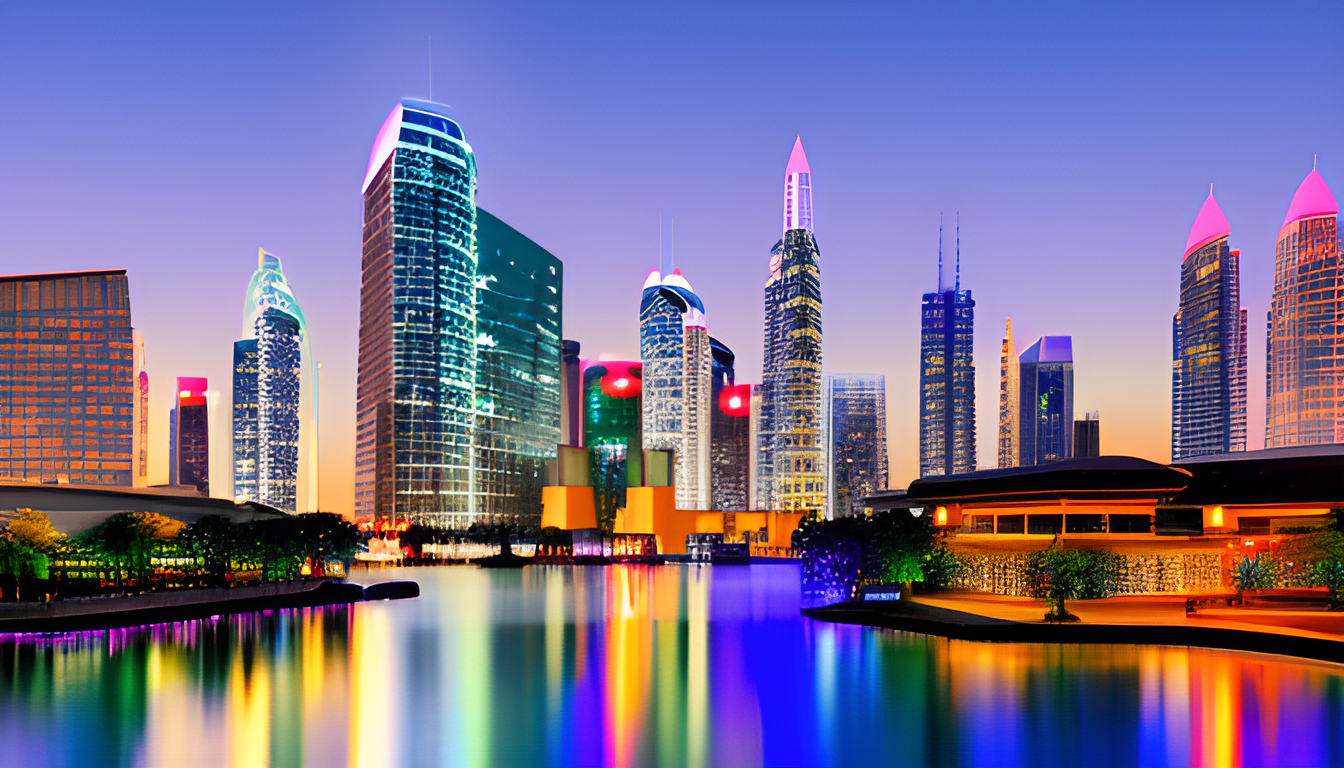
AI’s Influence on Social Interactions
Artificial Intelligence is not just a technological marvel; it’s a game changer in the way we interact with each other. Imagine a world where your virtual assistant understands your mood and tailors its responses accordingly. That’s the power of AI! From social media algorithms that curate your news feed to chatbots that provide customer service, AI is reshaping our daily communications in ways we could never have imagined.
Consider this: every time you scroll through your social media feed, algorithms powered by AI are working behind the scenes to determine what content you see. These algorithms analyze your past interactions—likes, shares, and comments—to predict what will engage you the most. This can create a personalized experience, but it also raises questions about echo chambers and the diversity of information we consume. Are we really seeing the world as it is, or just a reflection of our own preferences?
Moreover, AI-driven chatbots have revolutionized the way businesses interact with customers. They can handle inquiries 24/7, providing instant responses that enhance customer satisfaction. However, this convenience comes at a cost. With AI taking over many customer service roles, we must ask ourselves: what happens to the human touch in these interactions? Can a chatbot ever replace the empathy and understanding of a real person?
As we navigate this new landscape, it’s crucial to recognize both the benefits and challenges posed by AI in social interactions. While it can enhance connectivity and provide tailored experiences, it also risks diminishing genuine human connections. The question remains: how do we strike a balance between leveraging AI for convenience and maintaining the authenticity of our social interactions?
In summary, AI is not merely a tool; it’s a transformative force that influences how we communicate, perceive information, and build relationships. As we continue to integrate AI into our lives, we must remain vigilant about its impact and strive for a future where technology complements, rather than complicates, our social interactions.
The Future of Work with AI
The future of work is on the brink of a revolution, and at the heart of this transformation is artificial intelligence (AI). Imagine a workplace where mundane tasks are automated, allowing employees to focus on what truly matters—innovation and creativity. Sounds exciting, right? As AI technology continues to advance, it’s reshaping our professional landscape in ways we’ve only begun to understand.
One of the most significant shifts we can expect is the emergence of collaborative work environments. Humans and machines will work side by side, combining the strengths of both to achieve remarkable results. For instance, AI can analyze vast amounts of data at lightning speed, providing insights that humans can then use to make informed decisions. This synergy not only boosts productivity but also enhances job satisfaction as employees engage in more meaningful work.
However, with these advancements come new challenges. As the nature of work evolves, so does the need for new skills. Workers will need to adapt to this changing landscape by embracing lifelong learning and upskilling. Here are some essential skills that will be in high demand:
- Data analysis and interpretation
- AI and machine learning understanding
- Creativity and problem-solving
- Emotional intelligence and interpersonal skills
Moreover, the rise of AI will also influence job structures. Some jobs may become obsolete, while new roles will emerge, particularly in fields like AI ethics, data science, and cybersecurity. It’s crucial for educational institutions and businesses to prepare the workforce for these transitions. Investing in training programs and fostering a culture of adaptability will be key to thriving in this new era.
In conclusion, while the future of work with AI presents exciting opportunities, it also requires us to navigate a complex web of challenges. By embracing change and prioritizing continuous learning, we can harness the power of AI to create a more efficient, innovative, and fulfilling work environment for everyone.
Public Perception of AI Technologies
The way people view artificial intelligence (AI) is a mixed bag of excitement and apprehension. On one hand, many individuals are thrilled about the possibilities that AI brings, from making everyday tasks easier to revolutionizing entire industries. But on the other hand, there’s a palpable fear that AI could spiral out of control, leading to job losses, privacy invasions, and ethical dilemmas. This dichotomy in perception raises an important question: how can we bridge the gap between the potential benefits of AI and the fears that accompany its advancement?
To better understand public sentiment, surveys and studies have been conducted, revealing some intriguing insights. For instance, a recent survey found that:
| Perception | Percentage |
|---|---|
| Positive about AI’s benefits | 65% |
| Concerned about job displacement | 55% |
| Worried about privacy issues | 70% |
| Supportive of AI in healthcare | 75% |
These statistics highlight a significant trend: while people recognize the transformative potential of AI, they are equally concerned about the implications it may have on their lives. The challenge lies in educating the public about AI’s capabilities and limitations. After all, how can we expect people to embrace this technology if they don’t fully understand it?
Moreover, the media plays a crucial role in shaping public perception. Sensationalized headlines often amplify fears, leading to misconceptions about AI. For instance, movies and TV shows frequently portray AI as a malevolent force, which can skew public understanding. Instead, it’s vital to promote a balanced narrative that showcases both the advantages and the challenges of AI technologies.
In conclusion, as we move forward, fostering an informed dialogue about AI is essential. By addressing public concerns and highlighting the positive impacts of AI, we can create a more harmonious relationship between society and technology. Ultimately, understanding and trust will be key in determining whether AI becomes a tool for progress or a source of anxiety.
Global Regulations for AI
As we stand on the precipice of an AI-driven future, the need for global regulations becomes more pressing than ever. Without a framework to govern the development and implementation of artificial intelligence, we risk unleashing a technology that could spiral out of control. Imagine a world where AI systems operate without oversight, making decisions that could affect millions—scary, right?
The potential for misuse of AI technology is vast, ranging from privacy violations to biased decision-making processes. To tackle these issues, it’s essential to establish a set of guidelines that not only protect individuals but also promote ethical standards in AI development. Here are some critical areas that need regulation:
- Data Privacy: Ensuring that personal data is collected and used responsibly.
- Accountability: Defining who is responsible when AI systems cause harm.
- Transparency: Making AI algorithms understandable to users and stakeholders.
Countries like the European Union have already begun to draft regulations aimed at addressing these concerns. The EU’s proposed AI Act focuses on risk-based classifications of AI systems, categorizing them into different levels of risk and applying varying degrees of regulatory scrutiny. This approach could serve as a model for other nations looking to implement similar frameworks.
However, creating effective global regulations is no easy feat. It requires collaboration among governments, tech companies, and civil society to ensure that regulations are not only comprehensive but also adaptable to the rapidly changing landscape of AI technology. The challenge lies in balancing innovation with safety—how do we foster creativity and progress while safeguarding against potential risks?
In conclusion, as AI continues to evolve, so too must our approach to regulation. The establishment of global standards is not just a precaution; it’s a necessity to ensure that AI serves humanity positively. Only through thoughtful regulation can we harness the power of AI while mitigating its risks, paving the way for a future where technology and ethics coexist harmoniously.
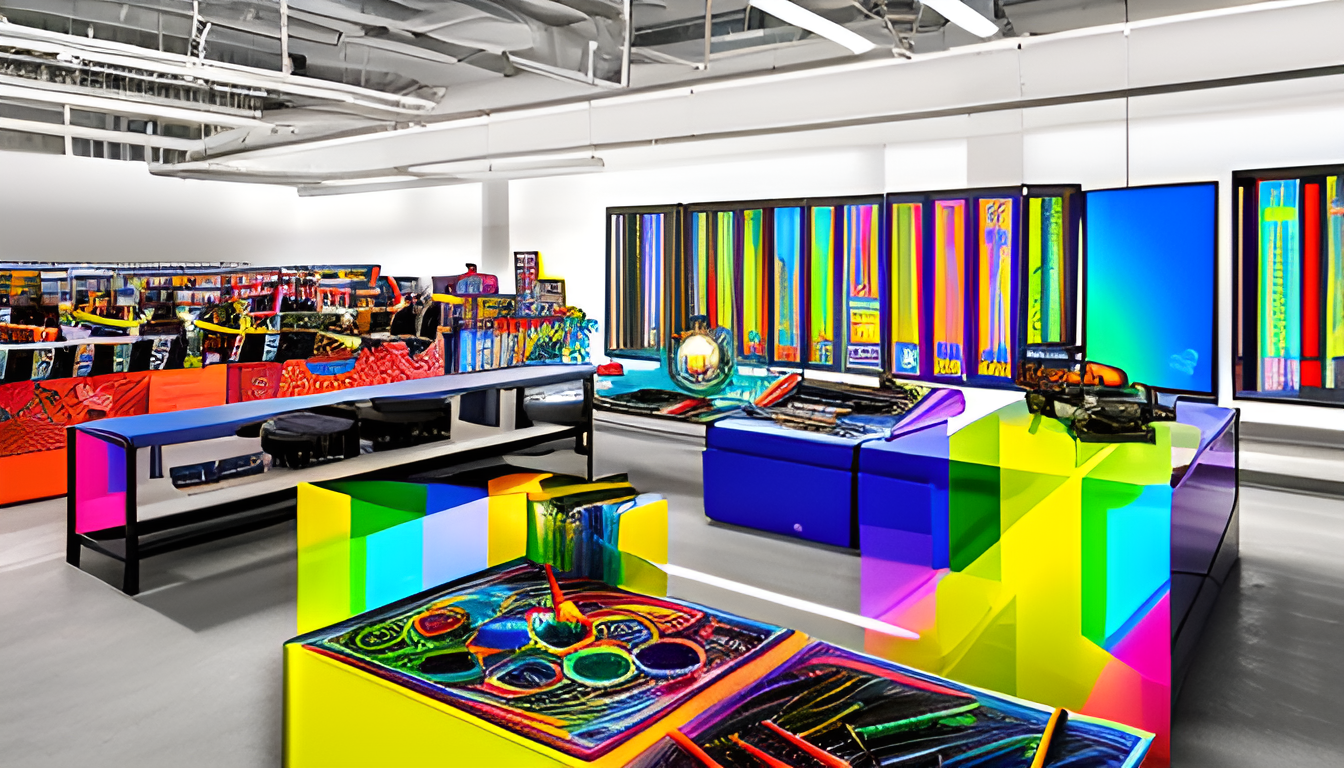
AI’s Role in Enhancing Creativity
In today’s digital age, artificial intelligence is not just about algorithms and data; it’s becoming a remarkable partner in the creative process. Imagine a world where machines collaborate with artists, musicians, and writers to produce stunning works of art and innovative ideas. This synergy between human creativity and AI technology is reshaping how we think about creativity itself. Have you ever wondered how a computer can help create a masterpiece or compose a symphony? Well, it’s happening right now!
AI tools are revolutionizing various creative fields by providing new ways to generate ideas, enhance artistic expression, and streamline the creative process. For instance, in the world of visual arts, AI algorithms can analyze thousands of artworks, recognizing patterns and styles that can inspire artists. This means that an artist can use AI to explore different aesthetics or even create entirely new genres. Similarly, in music, AI can compose original pieces by learning from existing music, giving musicians a fresh canvas to work with.
Consider how AI is being utilized in writing. Writers can now use AI-driven tools to assist with brainstorming, editing, and even generating content. This not only speeds up the writing process but also opens doors to new ideas that a human might not have considered. For example, AI can suggest plot twists or character developments based on existing narratives, making it a valuable tool for novelists and screenwriters alike.
However, the rise of AI in creative fields does raise some intriguing questions. Is AI truly capable of creativity, or is it merely a reflection of human creativity? As we embrace these technologies, we must also consider the implications for artists and creators. Will AI enhance our creative capabilities, or will it overshadow the unique human touch that defines art? As we navigate this new frontier, it’s essential to foster a dialogue about the role of AI in creativity, ensuring that it complements rather than replaces the human spirit.
Frequently Asked Questions
- Can AI really improve healthcare outcomes?
Absolutely! AI can analyze vast amounts of medical data quickly, helping doctors make better diagnoses and tailor treatment plans to individual patients. Think of it as having a super-smart assistant who knows all the latest research and patient histories at their fingertips!
- How can AI help combat climate change?
AI can optimize energy usage, enhance renewable energy sources, and monitor environmental changes. Imagine having a super-efficient energy manager that not only saves costs but also helps reduce our carbon footprint!
- What are the economic impacts of AI?
While AI can boost productivity and create new job opportunities, it also raises concerns about job displacement. It’s like a double-edged sword; we need to embrace the benefits while also preparing for the changes it brings to the job market.
- What ethical considerations should we keep in mind with AI?
Key issues include bias, accountability, and transparency. It’s crucial to ensure that AI systems are fair and do not perpetuate existing inequalities. Think of it as building a fair playground where everyone gets a chance to play!
- How is AI changing the way we learn?
AI personalizes learning experiences, making education more accessible and efficient. Picture a tutor who knows exactly what you need to learn and adapts lessons just for you!
- What are the privacy concerns associated with AI in surveillance?
While AI can enhance security, its use in surveillance raises questions about privacy and civil liberties. It’s like having a watchful eye that can help but also invade personal space if not regulated properly.
- Will AI take over jobs in the future?
Not quite! Instead of taking over, AI will likely change the nature of work, requiring us to adapt and learn new skills to collaborate with these technologies. Think of it as a partnership rather than a competition.
- How can we ensure safe AI development?
Establishing global regulations is essential. By creating guidelines, we can address concerns about misuse and ensure that AI benefits society as a whole. It’s like setting rules for a game to keep it fair and enjoyable for everyone!
- Is AI capable of enhancing creativity?
Yes! AI is being used in art, music, and literature, sparking discussions about creativity’s nature. It’s like having a creative partner who can inspire and push boundaries, but the human touch remains irreplaceable!
